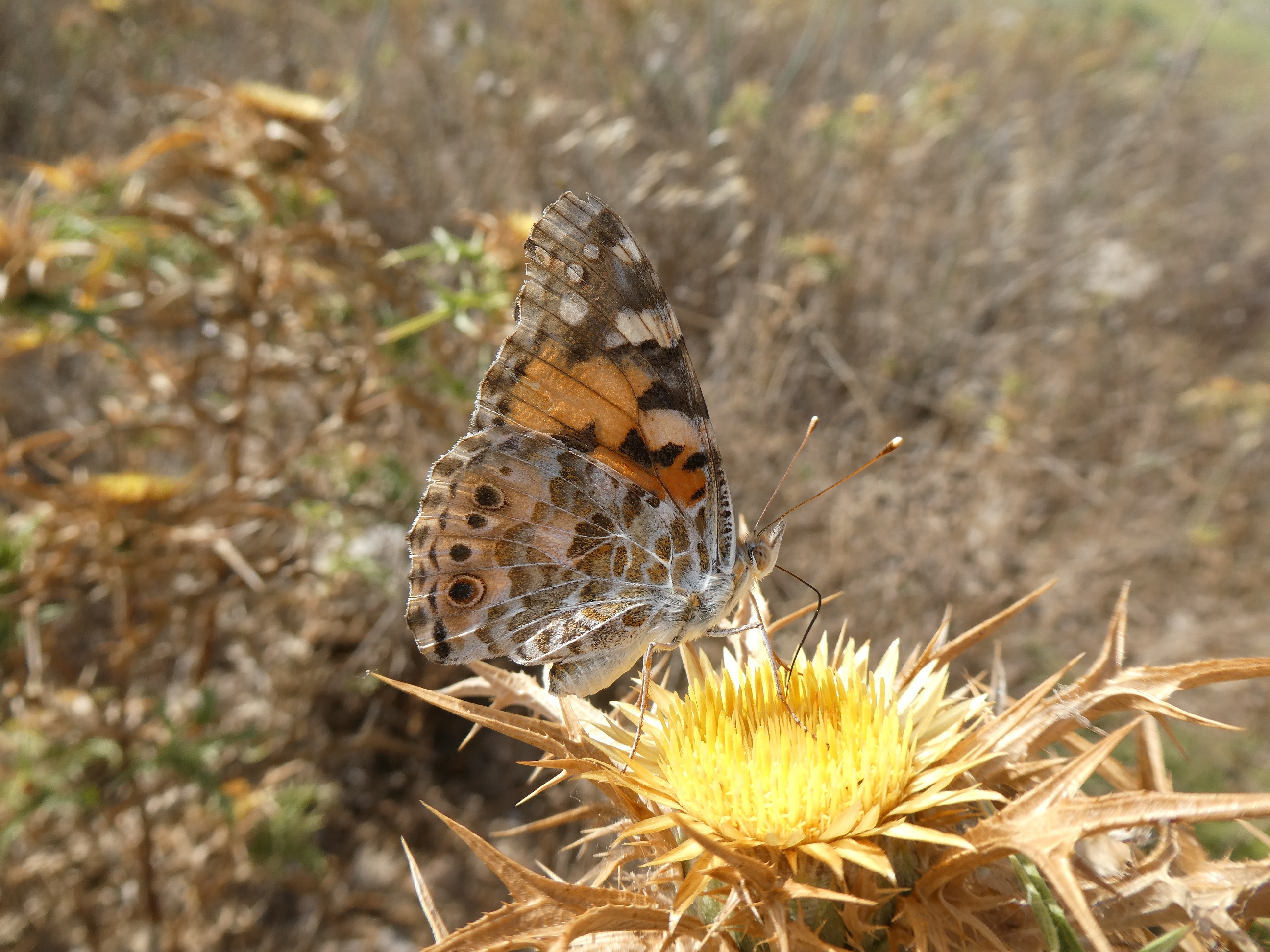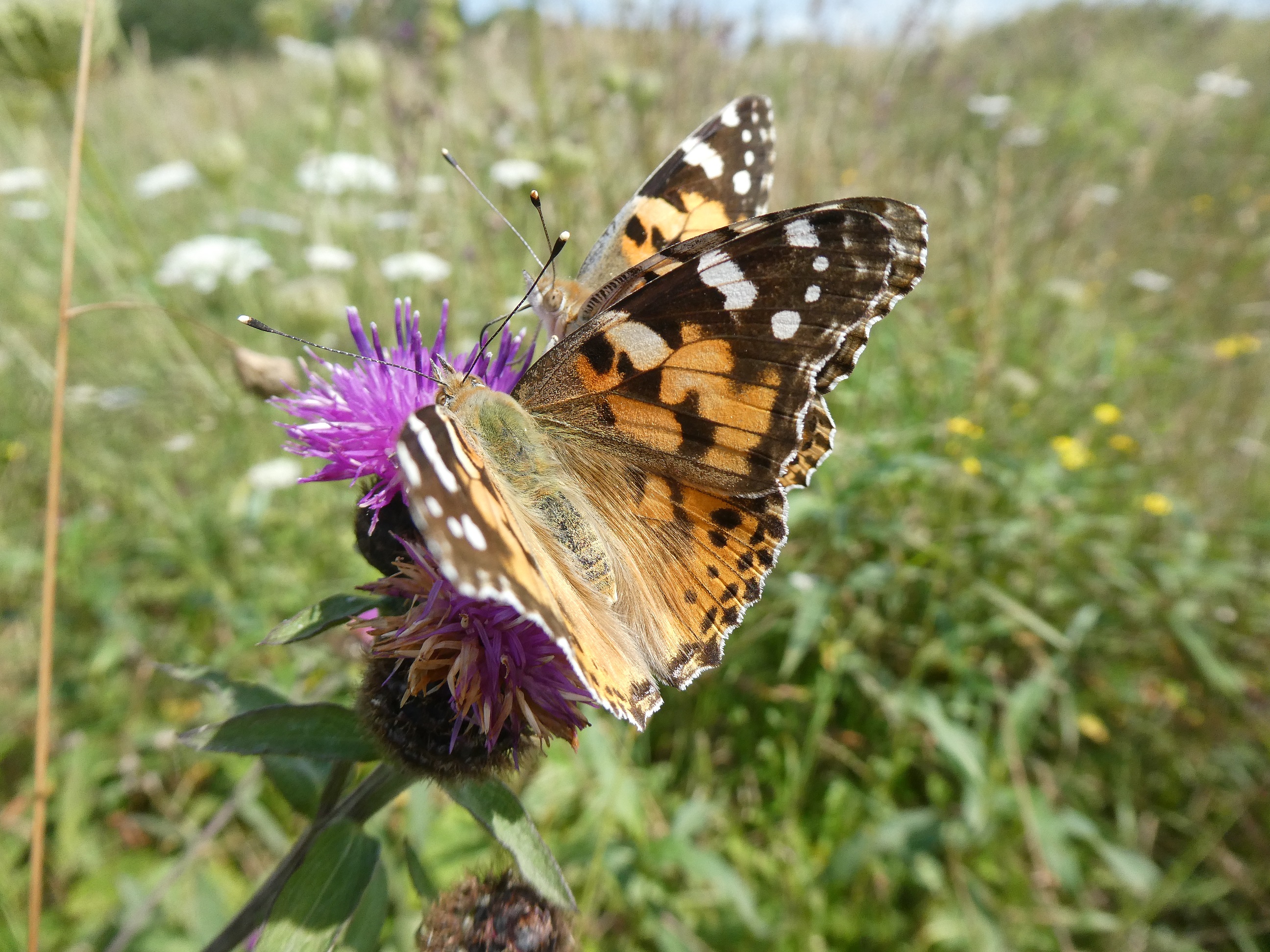The Painted Lady migration over the last two weeks, first noted along the northern coasts is now being recorded in a range of places on the coasts of Ireland. Records of large numbers arriving have now been received from the Dublin, Wicklow and Kerry coasts. The butterflies are initially feeding in coastal locations, on flower-rich sand dunes and coastal gardens before moving inland. The butterfly is currently (August 8th 2019) abundant in Lullymore, Kildare, in the midlands. Presumably, it is present inland in many other flower-rich locations. The massive numbers are attracting widespread public attention and media interest.
What happens next?
The butterflies are now busy feeding. Some will disperse and migrate further, while others will settle down to breed here. If the weather remains warm, their offspring will probably reach the adult state in September. The previous Painted Lady influx in late June and early July breed; these larvae are now reaching their final growth stage and it is likely that some have pupated. These will hatch as adult butterflies in two-three weeks depending on temperature.
We could have overlapping generations in flight over the next six weeks. If the weather remains warm, it could be the most numerous Irish butterfly. The newly emerged Irish-born butterflies might not breed here. Irish-born butterflies may behave differently to their foreign-born parents. Their parents probably migrated shortly after they hatched from their pupae. The native Irish butterflies usually spend several days in a calm, settled state, feeding in flower-rich areas to develop fat reserves to prepare for migration southwards, not northwards. Suddenly, without any sign of restlessness in advance, the butterflies in an area will disappear.
How do Painted Lady butterflies head south in autumn?
The way the butterflies depart is interesting. In 2009 researchers at Rothamsted Research in the UK discovered that the Painted Lady returned south in autumn. The research also discovered, using radar, that the butterflies fly on average, at altitudes of about 500 metres when leaving us (some Painted Ladies may also travel northwards at altitude). This differs from the departure of their relative, the Red Admiral, which migrates at eye level. The altitude at which the Painted Lady butterflies depart from these islands is a key reason we believed that this cold-sensitive species simply died off in Ireland and Britain when cold weather arrived.
Expanding our understanding of the Painted Lady survival strategy
The view that the butterfly embarked on mass migration to Britain, Ireland and northern Europe followed by breeding and expiry of the population sounds like ecological suicide. This view appears a highly improbable outcome today. One interpretation of this behaviour before 2009 was that this migratory behaviour was a long-term strategy to survive inevitable climate change, in that somewhere a colony would be favourably located to replenish the population over time.
This hypothesis may still hold some relevance. The Red Admiral which also has no diapause in its life cycle (in other words, it has no diapause or ‘rest’ stage and reproduces continuously) is now breeding year-round in some milder coastal locations in these islands. The less hardy Painted Lady may breed here over the winter if the climate continues to warm. Indeed, Frank Smyth, who discovered Red Admiral breeding over the winter at Howth is monitoring the Painted Lady there to check if it breeds during our colder months. The young stages of the Painted Lady have not yet been found in Ireland over the winter months.
This is to speculate on changes that may occur. However, to focus on a change that has taken place: in my lifetime, the Painted Lady has never had four consecutive years of abundance (2016-2019) and has not arrived in large numbers in the dark, murky depths of an Irish January as it did this year. What else the butterfly has to teach us about our environment? We will have to wait and watch carefully…
What can you do to help?
The Painted Lady is not a fussy species. A habitat generalist, it occurs anywhere there are flowers. Waste ground (the early English lepidopterist and artist Moses Harris, a member of the Aurelians, the world’s first entomological society, produced a painting of the Painted Lady for a book The Aurelian published in 1766. The plate featured the butterfly and its immature stages on Spear Thistle growing amid broken pottery, clay pipe and glassware. The book cost about Stg £800 in today’s currency), gardens, parks, wood edges, mountains, sand dunes, bogs, fields will attract the butterfly.
All you need is flowers that produce nectar. Late in the year, allow ivy to flower. And to look after its breeding requirements you can plant or allow to grow any of these: Creeping Thistle, Spear Thistle, Marsh Thistle, Common Nettle, Common Malva (and other mallow species), Borage and Artichoke, among others. Grow these in an unshaded area.
As a butterfly-friendly gardener, you will have the satisfaction of seeing the butterfly and contributing to international conservation. Indeed, in 2009 it was calculated that millions more Painted Ladies departed these islands that autumn than had arrived that summer! If it breeds in your garden you will get the chance to study its development. The larva rarely moves far and you will have no trouble finding the larval tents, made by folding a leaf or leaves together with silk. The fully fed caterpillar usually leaves the plant to pupate but very occasionally it will pupate within the larval tent. The butterfly will most likely remain in your garden for a few days in autumn, feeding on your nectar before its amazing southbound journey. The southern parts of its European range, where some Painted Lady butterflies remain over the summer, will be cooler and the vegetation will have turned green again, making these areas suitable for the butterfly once more.
Finally, send us your records so we can track the butterfly over the coming weeks. For the details needed and how to send us your record, see https://butterflyconservation.ie/wp/records/




